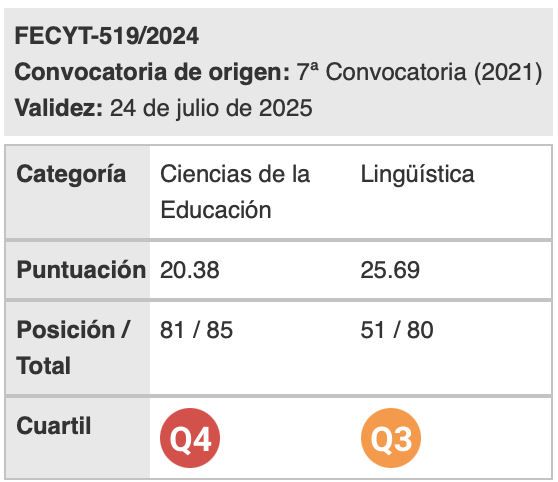Identifying moves and elements of persuasion in collection letters
Palabras clave:
Move analysis, persuasion, genre analysis, English for specific purposes.Resumen
Collection letters are meant to collect balances due and at the same time they attempt to encourage a business relationship and its revenue flow to continue. This type of correspondence is nowadays one of the few types of correspondence that is not maintained electronically because in the different stages of the collection process, these letters can acquire certain legal power. In these extremely difficult days for the financial world, collection letters have become a frequent means of correspondence between collectors and debtors in several countries, which makes it necessary to carefully analyze this particular genre in order to raise awareness of its structural organization and content, particularly to help language users who may not be familiar with this genre in their own cultures. This study looks at the collection letter as business correspondence that consists of specific moves that function together to persuade debtors to pay the agreed-upon amount that is legitimately owed to the creditor. The study also explores the different stages of the collection process and the functional and rhetorical approaches that are found at each of these stages, analyzing the frequency of the moves identified in the letters and the different uses of those moves. The results of this study show that requesting the debtor to communicate with the creditor is undoubtedly the most frequently used strategy for achieving the two major purposes of this type of correspondence.
Descargas
Citas
Aubuchon, N. (1997). The anatomy of persuasion. New York, AMACOM.
Bazerman, C. (1994). Systems of genres and the enactment of social interactions. In A. Freedman and P. Medway (Eds.), Genre and the new rhetoric (pp. 79-101). London: Taylor and Francis.
Bhatia, V. (1993). Analyzing genre: Language in professional settings. London: Longman.
Bosworth, B. (2004). Under the influence. Credit Management, June, 32-34 Retrieved June 8, 2006, from http://www.allbusiness.com/ business-finance/business- loans-business-credit/1128658-1.html.
Connor, U., & Gladkov, K. (2004). Rhetorical appeals in fundraising direct mail letters. In U. Connor and T. Upton (Eds.), Discourse in the professions (pp. 257- 286). Philadelphia: John Benjamins.
Dominy, N. & Kempson, E. (2003). Can’t pay or won’t pay? A review of creditor and debtor approaches to the non-payment of bills [Electronic version.] Personal Finance Research Centre 4 (3), University of Bristol.
Flowerdew, J. & Wan, A. (2006). Genre analysis of tax computation letters; How and why tax accountants write the way they do. English for Specific Purposes 25, 133-153.
Hanel, S. (2006). Moves in collection letters. Unpublished Manuscript. Iowa State University. Ames, Iowa.
Hanel, S. (2007). Moves in collection letters. Unpublished Manuscript. Iowa State University. Ames, Iowa.
Johns, A., Bawarshi, A., Coe, R., Hyland, K., Paltridge, B., Reiff, M. J. & Tardy, C. (2006). Crossing the boundaries of genre studies: Commentaries by experts. Journal of Second Language Writing 15, 234-249.
Lawrence, N. (1974). Writing communications in business and industry. Englewood Cliffs, NJ: Prentice-Hall.
Luecke. R. (2005). Power, influence and persuasion: Sell your ideas and make things happen. Boston, MA: Harvard Business School Publishing.
Rock, P. E. (1968). Observation on debt collection. The British Journal of Sociology 19(2), 176-190.
Sant, T. (2004). Persuasive business proposals. New York, NY. AMACOM. Spinks, N., & Wells, B. (1997). Collection communication: a problem child of
management. Management Decision 35(2), 106-109.
Swales, J. (1981). Aspects of research article introductions. Aston ESP Research
Report N 1. Birmingham: The University of Aston.
Swales, J. (1990). Genre analysis. Cambridge: Cambridge University Press. Swales, J. (2004). Research genres. Cambridge: Cambridge University Press.
Van Nus, M. (1999). Can we count on the bookings of potatoes to Madeira? Corporate context and discourse practices in direct sales letters. In F. Bargiela- Chiappini and C. Nickerson (Eds.), Writing business: Genres, media and discourses. (pp 181-205). London: Longman.
Descargas
Publicado
Cómo citar
Número
Sección
Licencia
Aquellos autores/as que tengan publicaciones con esta revista, aceptan los términos siguientes:
- Los autores/as conservarán sus derechos de autor y garantizarán a la revista el derecho de primera publicación de su obra, el cuál estará simultáneamente sujeto a la Licencia de reconocimiento de Creative Commons que permite a terceros compartir la obra siempre que se indique su autor y su primera publicación esta revista.
- Los autores/as podrán adoptar otros acuerdos de licencia no exclusiva de distribución de la versión de la obra publicada (p. ej.: depositarla en un archivo telemático institucional o publicarla en un volumen monográfico) siempre que se indique la publicación inicial en esta revista.
- Se permite y recomienda a los autores/as difundir su obra a través de Internet (p. ej.: en archivos telemáticos institucionales o en su página web) antes y durante el proceso de envío, lo cual puede producir intercambios interesantes y aumentar las citas de la obra publicada. (Véase El efecto del acceso abierto).

Revista de Lenguas para fines específicos is licensed under a Creative Commons Reconocimiento-NoComercial-SinObraDerivada 4.0 Internacional License.






















